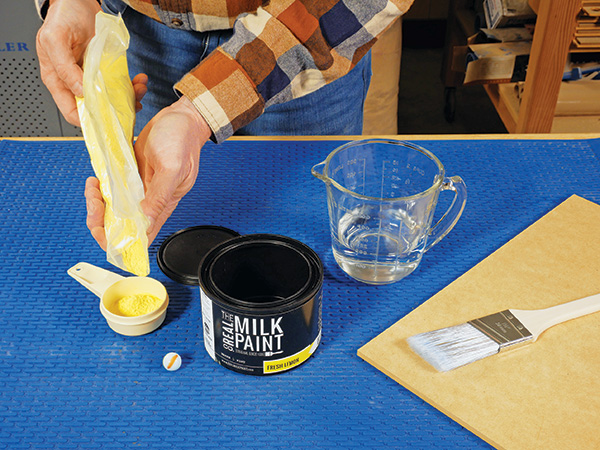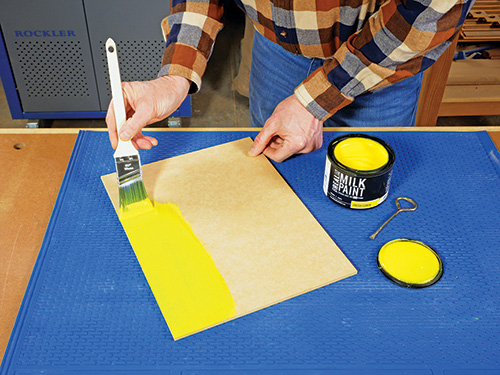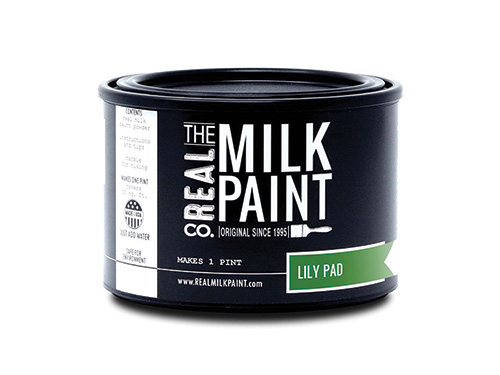
Before the advent of petroleum-based paints, casein (milk protein)- based paints were commonplace. In recent years, these historically inspired paints have had a resurgence in popularity among DIYers, crafters and woodworkers alike. Part of that revival has to do with the nontoxic nature of this powdered paint. It is VOC-free, making it a safe and eco-friendly option for indoor or outdoor use.

Other benefits include milk paint’s versatility and visual appeal. It can be applied over absorbent surfaces such as wood, concrete, plaster or brick without the need for primer. It is UV fade-resistant and will accept all topcoats and finishes, which can alter the sheen or add even more durability. Milk paint dries quickly without residual odor and cleans up with water. Waste paint is worry-free, too — just pour it down the drain, flush it or compost it.

The Real Milk Paint Co. Milk Paint, now available in an assortment of colors from Rockler, is made from natural ingredients: casein, lime, pigments and a plant-based filler. The paint is simple to prepare for use by mixing it 50/50 with tap water. Each can includes 11⁄4 cups of paint powder and a handy glass mixing marble. Pour the amount of dry paint and water you need into the plastic can, drop the marble in, snap on the lid and shake the can vigorously for 5 minutes.
Once mixed, the paint is workable for up to two weeks if kept refrigerated. In powdered form, it’s shelf stable and will last for years. The dry contents of the can forms one pint of liquid paint, which covers about 35 sq. ft.





